Photography Series: Tanner Wilson’s Swiss analog jam
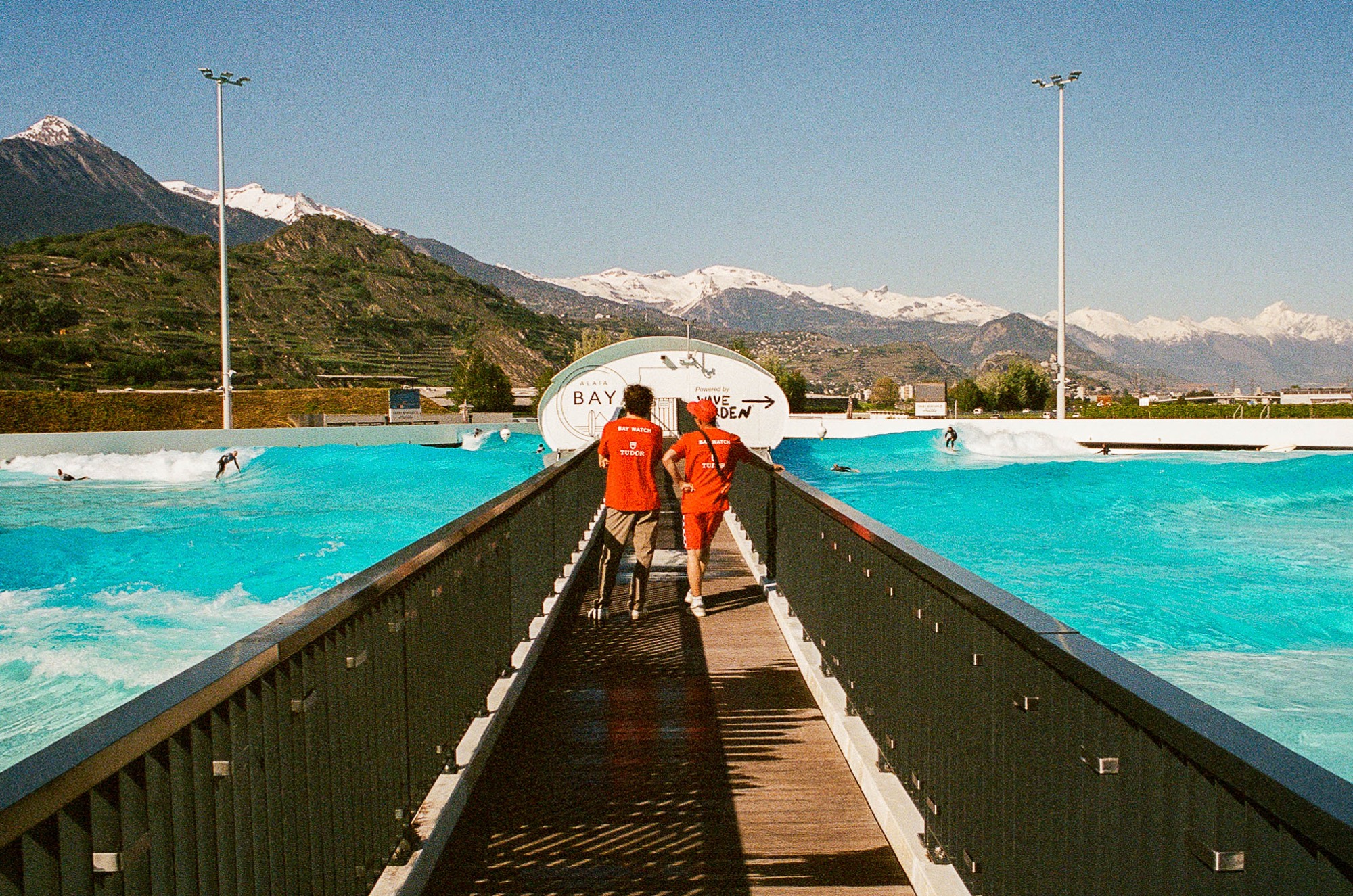
There’s a certain allure to Switzerland. I think it’s the open green spaces set to a backdrop of alpine peaks. But what do I know about open spaces, I’m from Orange County. So maybe it has to do with the fact they have an actual Matterhorn mountain rather than the fabricated Disneyland version I grew up with. Maybe it’s the images of Julie Andrews swirling in The Sound of Music or just the simple perfection of a Toblerone bar. Either way, Switzerland has offered Americans a neatly packaged slice of exotic fascination for decades.
Tanner Wilson is a California photographer specializing in film as a medium. As an avid hiker and adventurer of open space, he’s highly skilled in capturing raw landscapes. He says using analog film has allowed him to slow down and reflect. During a trip to Munich this spring he made a stopover at Alaia Bay to surf and shoot. Instead of just firing off digital frames, Tanner took his time, loading up rolls of Kodak film, adjusting shutter speed, iso, f stops and all points in-between to capture the unique juxtaposition between wave pool and raw Alpine backdrop.
Why shoot a wave pool in Switzerland?
Why not? Although the purpose of my visit was obviously to surf, I almost always have a camera around my neck and I couldn’t resist the urge to throw a roll of Kodak film in and snap a few photos. It was a blue-bird day in the Swiss Alps and the snow-capped peaks were in full visibility. Landscape photography is one of my specialties so it was a treat to capture the spectacle that is inland surfing in such a beautiful location.
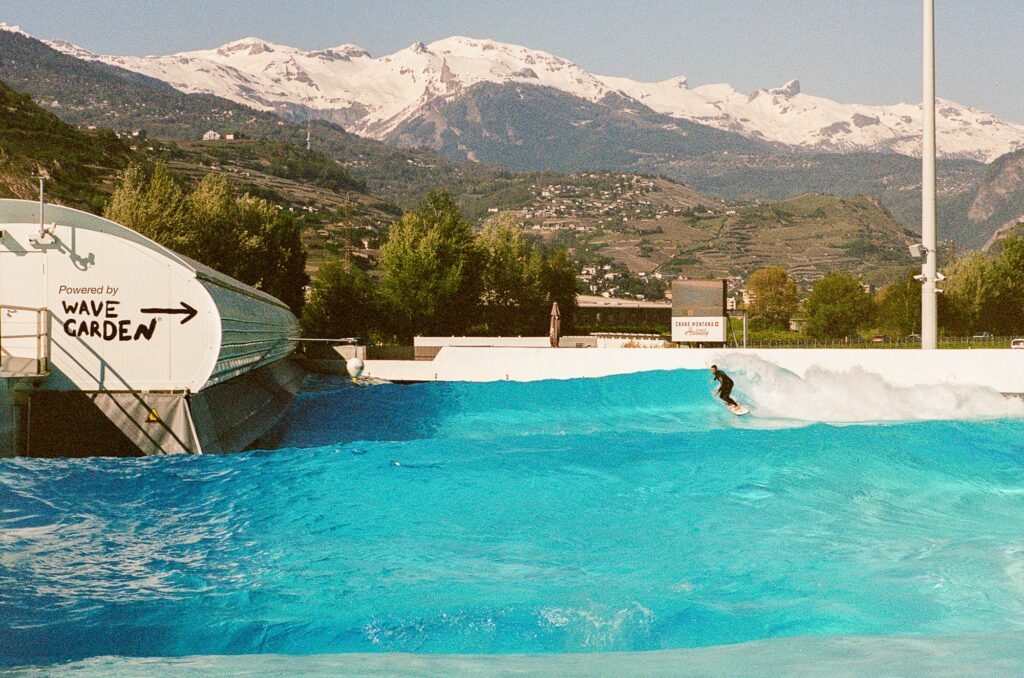
The blue colors came out very luminescent, almost surreal.
The blues are definitely one of my favorite parts of the images. It is less about the camera and more about lighting, film stock, and digital scanning when you convert the film negative into a “positive”. This particular film stock, Kodak Portra 400, has a very dynamic range so it holds well in harsh light and captured these colors nicely. But, scanning the film and using the right settings when digitizing the film is what can really make the film stock shine. Think of this process almost like post-processing a digital file, but with a lot less range to correct things beyond white balance, highlights, shadows, etc.
Tell us about the camera you used and why, specifically, that model.
These images were created with my Nikon FM2, a fully manual 35mm film camera that was released back in the early ‘80s. It’s also fully mechanical so it requires no batteries to operate outside of its optional internal light meter. This is still one of my favorite cameras ever made, trumping most digital cameras in my eyes. The build quality is top notch and Nikon’s glass is extremely sharp, holding its own even in today’s media standards.
I consider it one of my workhorse cameras since its almost always by side. From spending weeks in the backcountry to shooting commercial work on film, this camera has been put through the wringer. And, who knows where it’s been with its previous owner(s)!
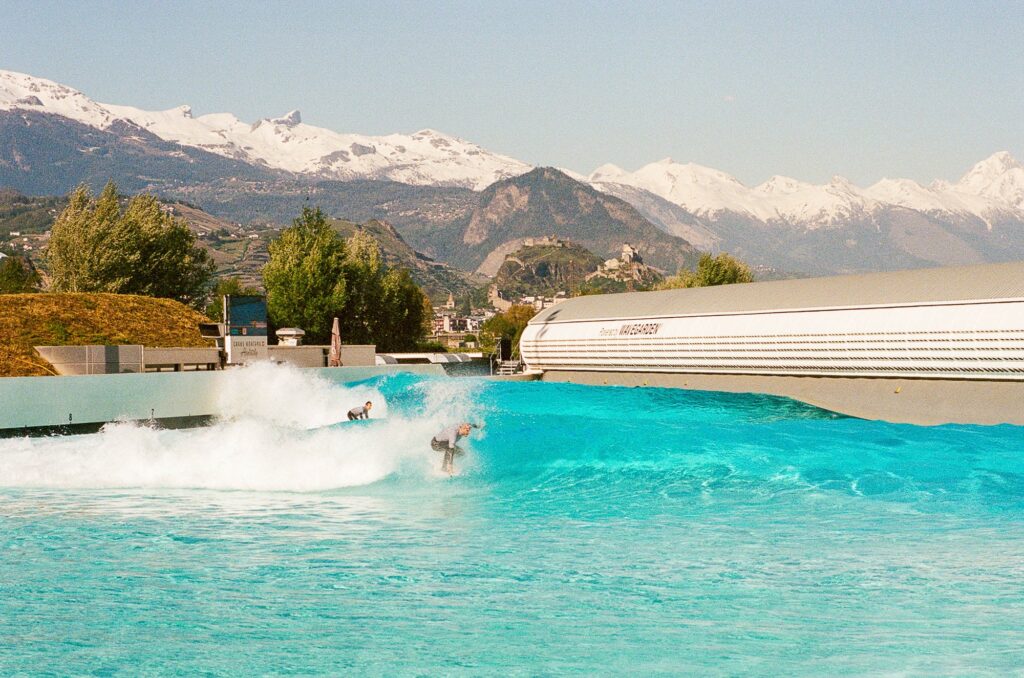
How do you acquire film these days and is there a big selection?
Believe it or not, film has been making a major comeback in the last 5+ years and it’s relatively easy to find online or at local camera shops and labs. Kodak, Fujifilm, and Cinestill are a few names in the game that make film stocks rated for all ranges of light, grain, colors and skin tones, etc.
The issue of getting film more so has to do with major price increases and supply chain issues. Demand amongst us hipster film shooters has increased so drastically and manufacturers have run into production issues just like many other industries (the wave pool space included). I’ve witnessed prices literally double in the past 2 years. But what’s crazy is that sellers still sell out of product.
Even without the high prices, you’re still paying for every shot so you better make them count! But, that intentionality for every single image is the part of the process that I love the most. It’s kind of like surfing… you only get so many waves in the ocean or you’re paying for them in a wave pool.
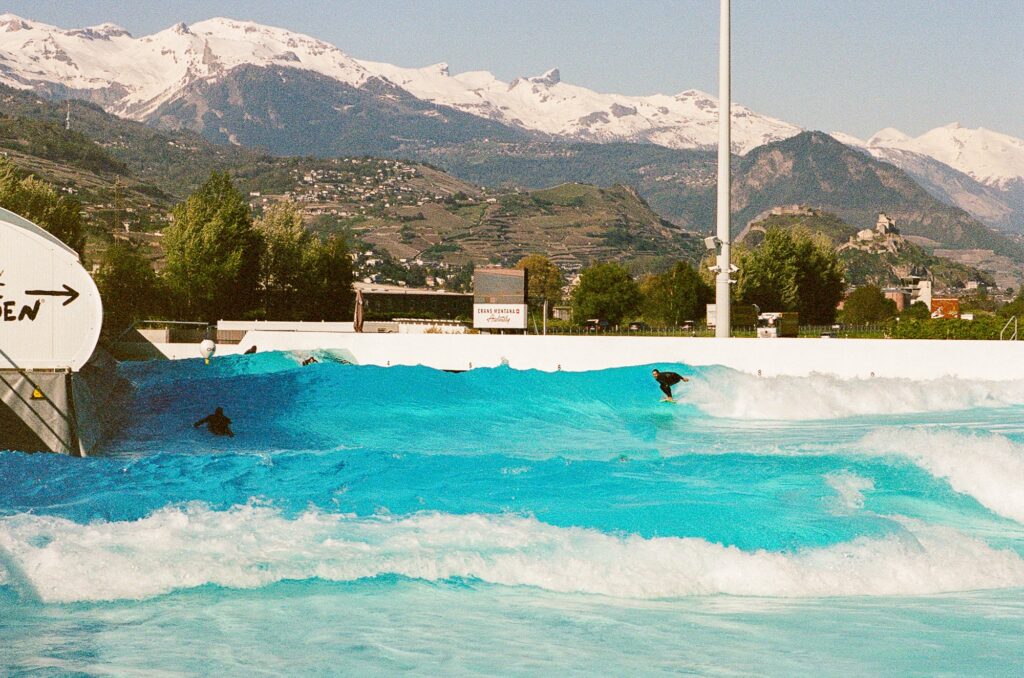
Share with us your other photography and film work.
I focus mainly on landscape and outdoor lifestyle photography but dabble in and am still learning all genres. From remote scenes in the wilderness to product shoots and event photography, I tend to focus a lot on creating unique and attention-grabbing composition and finding pops of color.
What’s cool is that I’ve also been able to leverage some of my skills in my role at WhiteWater for both Endless Surf and FlowRider. You best believe I’ll blast through a roll of film or two when we commission our first Endless Surf lagoon at o2 SURFTOWN MUC.
What is your favorite image from the roll and why?
I think my favorite is number 5 because of the layers (waves, hills, peaks) and the texture of the vineyards on the hill. Plus, I like the movement of the surfer coming off of his turn. But, #3 is a close contender. Maybe because the left side of the pool is like a new scene for me since I’m regular and prefer to surf the right. Regardless, I’m stoked with how all of them turned out for a few quick snaps post-session. Film is not dead!
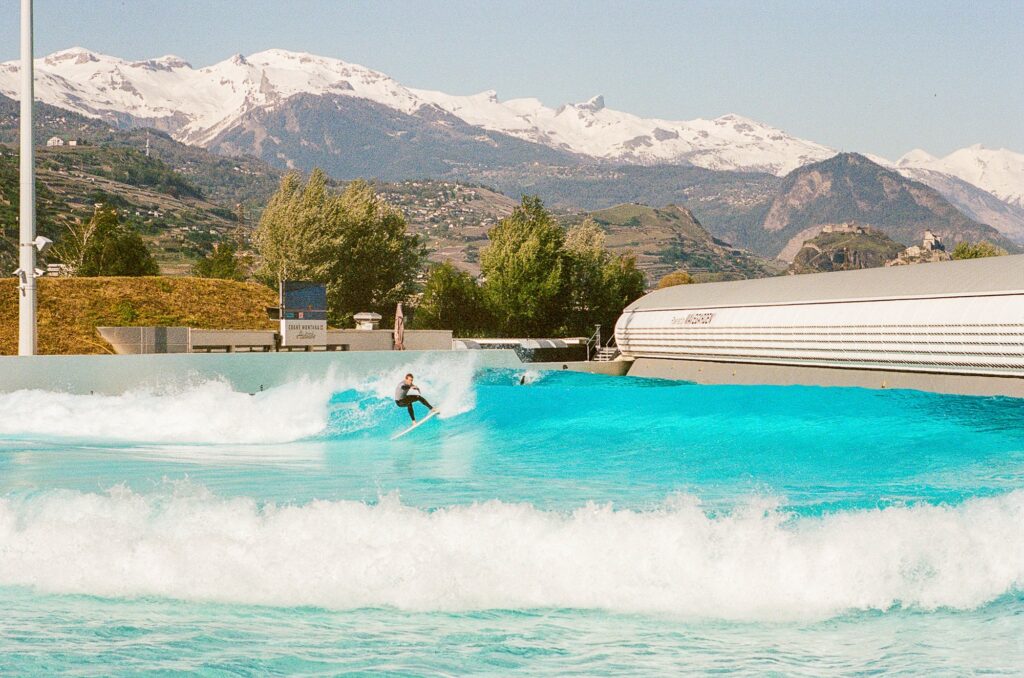
You can find more of Tanner’s work on Instagram (@tannerwilson.film) or at his website Tanner Wilson Film.
Related Coverage
